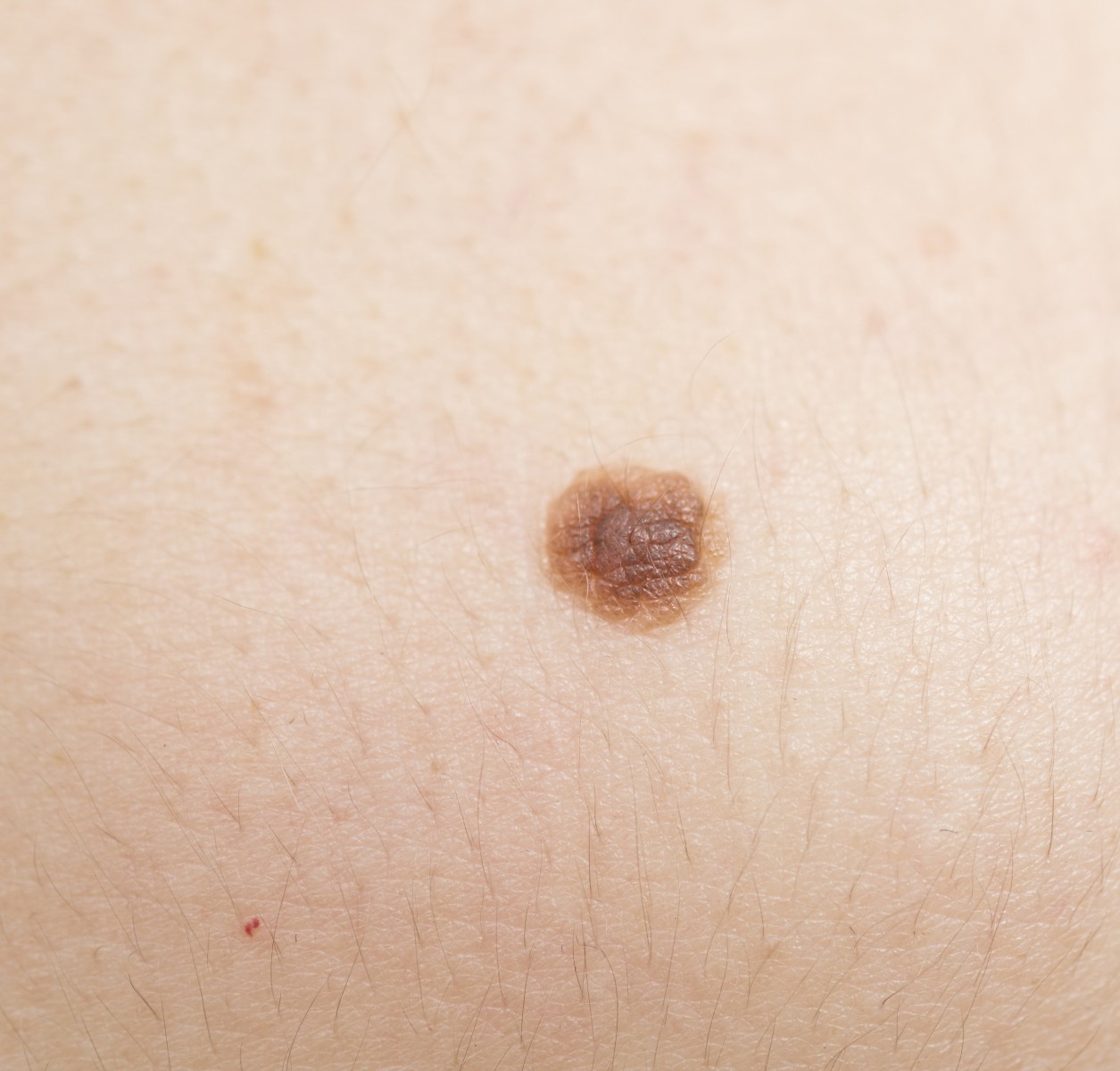Researchers at the University of Pennsylvania and the Wistar Institute recently discovered a key genetic factor that maintains skin moles in a non-cancerous, no-growth state. The study was published in the journal Cancer Discovery and is entitled “CDKN2B loss promotes progression from benign melanocytic nevus to melanoma”.
Moles are benign tumors found on the skin that originate from melanin-producing cells (melanocytes). It is known that a mutation in a gene called BRAF is responsible for the abnormal growth of melanocytes. Melanomas, the most dangerous form of skin cancer, are also originated from BRAF mutations and abnormal melanocyte growth. However, in moles, cell proliferation stops at a certain point.
“Why moles stop growing, despite all that BRAF activity, has been a long-standing question in the field,” noted the study’s senior author Dr. Todd W. Ridky in a news release.
In order to address this question, researchers analyzed mole cells from benign moles removed from patients, and compared them to melanocytes from normal skin (non-mole).
Researchers found that mole melanocytes had an extremely high expression of a gene called p15 in comparison to normal skin melanocytes (140 times higher). When melanoma cells were analyzed for p15 expression, the team found very low or undetectable levels of p15 in comparison to mole melanocytes. The findings led the team to suggest that p15 is an important factor for the maintenance of moles in a benign state, and that loss of p15 promotes the development into melanoma.
“The BRAF mutation that stimulates the initial growth of moles also stimulates the production of a tumor suppressor protein, p15, which ultimately acts as a powerful brake on further cell division,” explained Dr. Ridky. “It’s this cell division that ultimately allows the transition from a normal mole into melanoma. When mole cells lose the p15 brake, cells can start dividing again and can progress into cancer.”
In addition, researchers found that BRAF over-activation responsible for mole growth also induces the secretion of a molecule called transforming growth factor (TGF)-beta by mole cells. TGF-beta, in turn, triggers mole cells to produce more p15, arresting their growth. These findings are in agreement with the fact that most moles have to reach a certain size (a few millimeters) before growth is arrested, meaning that TGF-beta needs to reach a certain level before cell proliferation can be stopped.
The team engineered a new model of human melanoma where skin grafts lacking p15 were made from human mole cells. When other known melanoma mutations were introduced in the model and the grafts transplanted into mice, researchers found that the p15 depleted cells progressed into melanoma.
“The model tissues are medically relevant because they used the naturally occurring human mole cells in the 3-dimensional environment of living skin, which allows detailed functional studies – the field hasn’t had an experimental system like this before,” said the study’s lead author Andrew McNeal.
The team’s next goal is to explore this model extensively to obtain more insights into melanoma development and possible new therapies. Researchers will also focus on investigating a possible role of p15 in other types of cancer.
“That deletion that simultaneously takes out both p16 and p15 is among the most common DNA deletions in human cancers,” noted Dr. Ridky. “Cancer biologists have generally assumed that p16 is the more important of the two, but I think that we’re going to find important and unique roles for p15 even beyond the context of moles and melanoma.”
Similar to p15, p16 is also a tumor suppressor that is present in moles but lost in melanomas. In fact, p16 has been thought as the main factor responsible for growth inhibition in moles. Now, the authors suggest that both p15 and p16 work together to halt cell proliferation in moles, although p15 seems to play a more relevant and determinant role.


